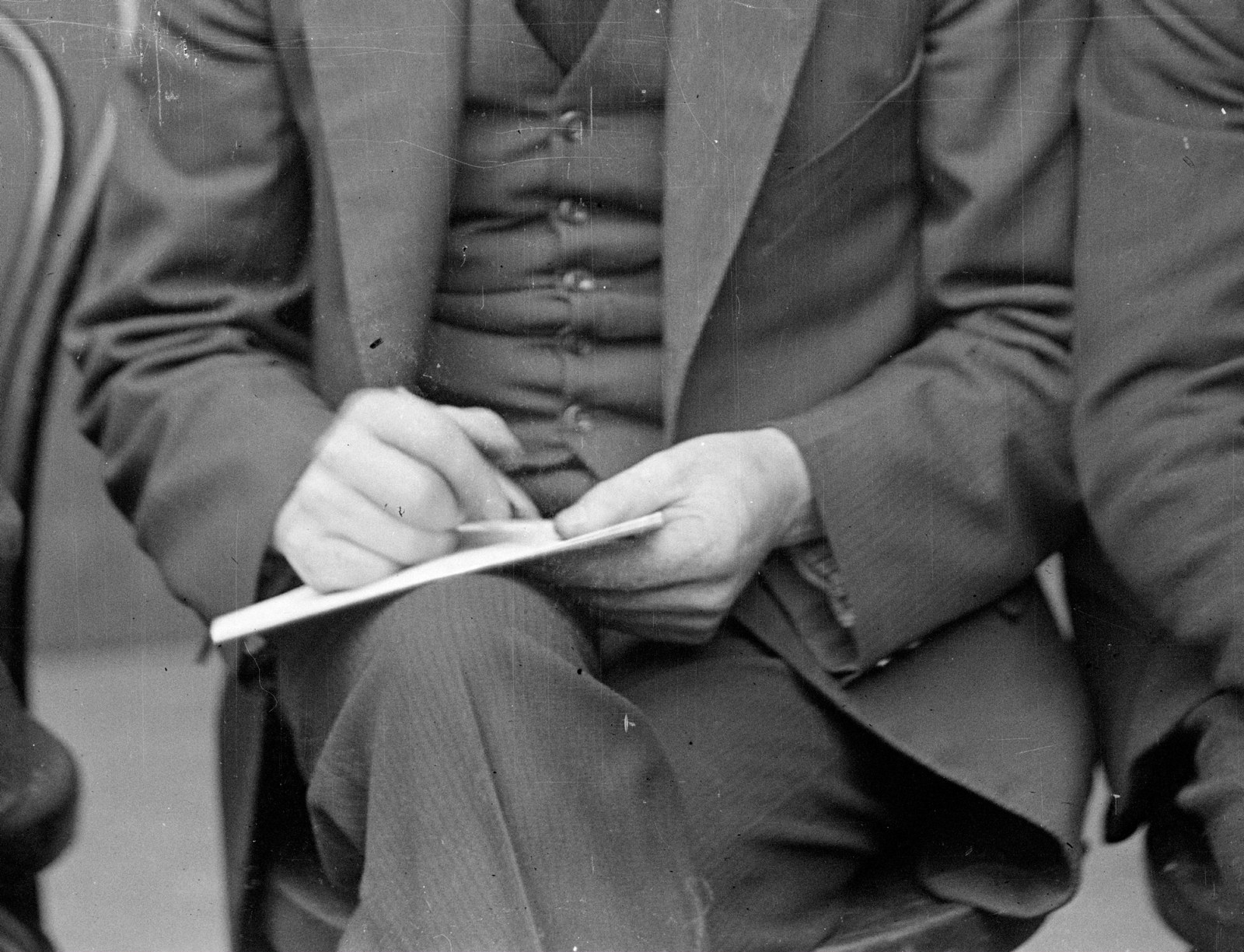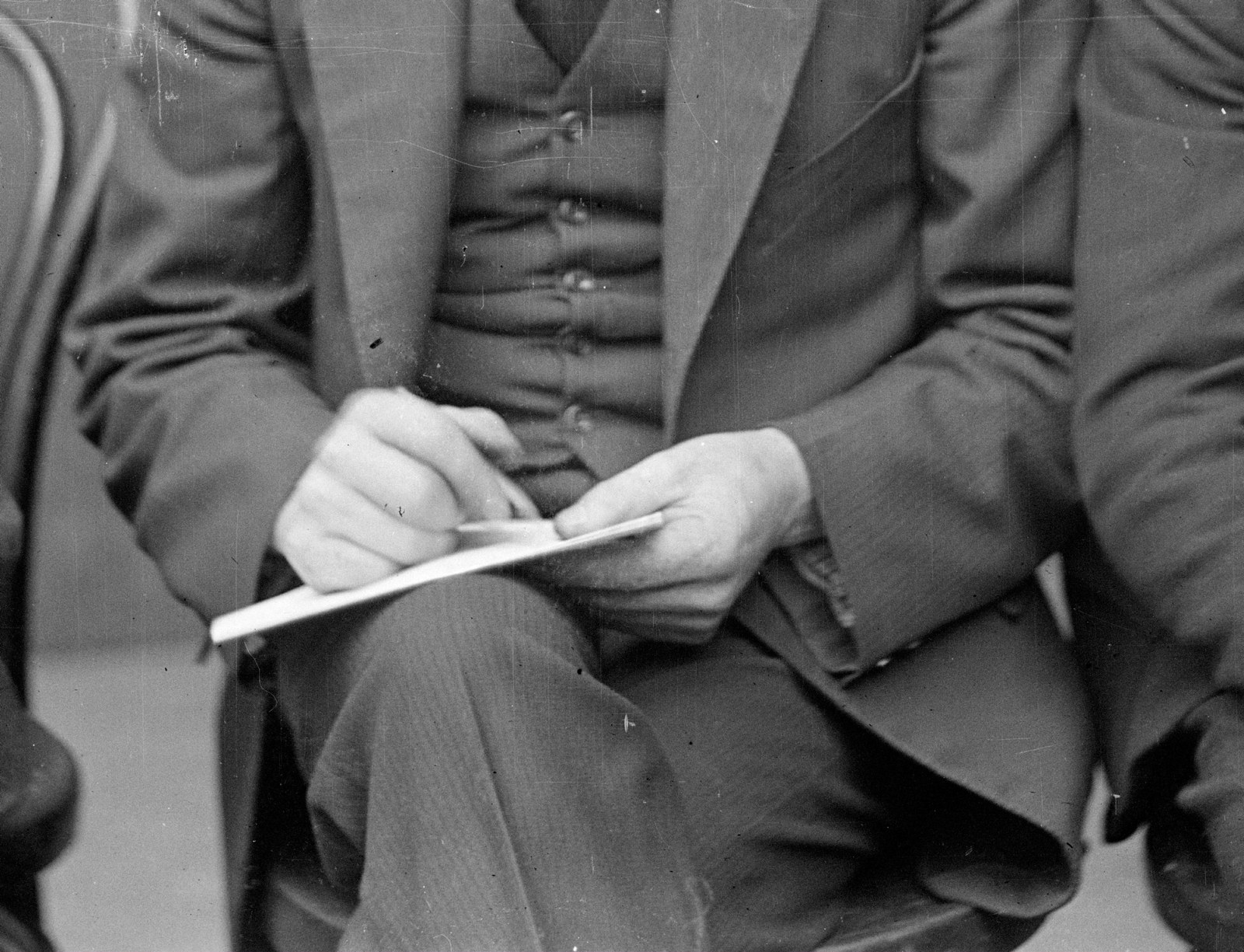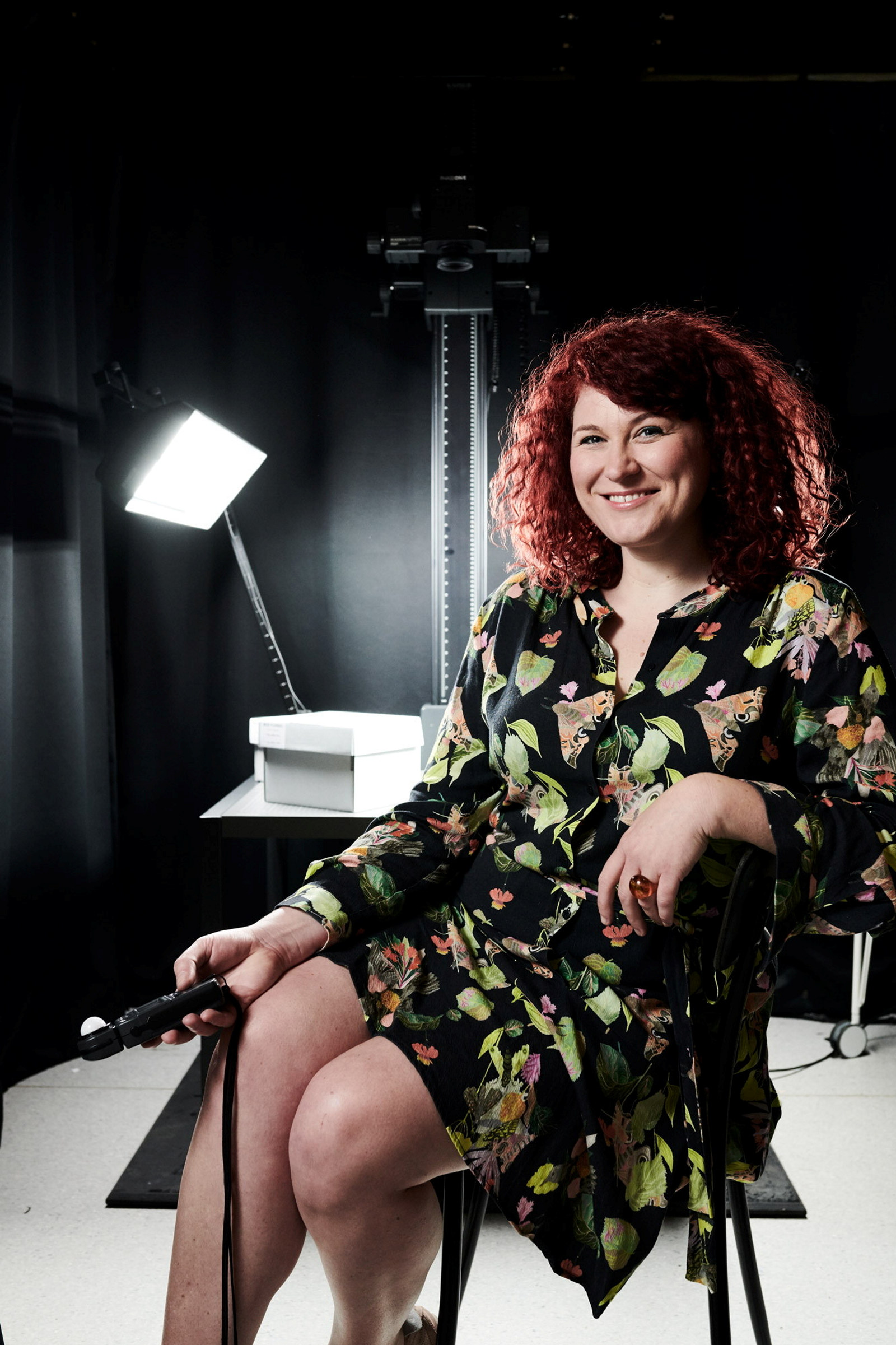Captured on glass
It’s almost 100 years since New South Wales police used glass-plate negatives to photograph suspects in custody. These negatives are a direct link to that moment in time, and provide evidence about photographic technology and methods in the 1920s.
After setting up his camera in the holding yard at Central Police Station, the police photographer determined an exposure for the light falling on the subject in front of his lens, directed the sitter into the frame and clicked the shutter to expose the plate. The action of light on the emulsion created a latent image that, after chemical processing, became the negative. This was printed and the resulting portraits were used by police to identify suspects and investigate crimes.
Today these negatives form part of the New South Wales Police Forensic Photography Archive. Spanning 1910–64, the archive comprises different types, formats and sizes of negatives. For me, each one raises questions: how and when was this negative exposed, what camera did the photographer use, and what was their intention? My research into the mugshots known as the Specials has led to insights into the photomechanical processes as well as the technical and practical challenges the photographers might have faced.
The evidence of the negative
A negative tells us more about a photographer’s practice, technology and methods of production than any finished print could. It’s the in-camera view – a direct physical link to the moment in time when the photograph was taken, and to the photographer and the scene they preserve.
The Specials photographs are dry glass-plate negatives – fragile sheets of glass coated in gelatin silver emulsion. The image is tonally inverted on the plate, so that the bright areas appear dark and the deep shadows have no presence. Handwritten inscriptions are visible on one side of the plate. Often the smooth image surface is interrupted with marks, abrasions, dust and policemen’s fingerprints. The passing of time is evident where the emulsion shimmers silver, is yellowing at the edges or has been washed away. A close examination of these objects allows us to see what the photographer produced and understand how the technology shaped the police photographer’s work and the qualities of their images.

The archive’s negatives
The New South Wales Police Forensic Photography Archive contains photographic negatives in several formats and sizes created between around 1910 and 1964
Channelling the police photographer
Recently I had an opportunity to hand-make dry glass-plate negatives in a workshop at Gold Street Studios in Trentham, Victoria. The large-format negatives, analogue view camera (with manual exposure settings), slow emulsion, unpredictable lighting conditions, chemical processes and moving subjects all reflected the experience of the police photographer at work in the 1920s. We started with a piece of glass, which we prepared, coated, exposed and processed, then contact printed to produce a photograph. The experience demonstrated both the camera craft required to obtain a well-focused, correctly exposed negative and the technical knowledge needed for darkroom processing and mixing chemicals.
In the 1920s, the police photographer would have had to gain the suspect’s participation, working quickly to execute his photographic portraits. This era of photographic technology necessitated exposure times of anywhere from less than a second to a few seconds, as shown where sitters have moved during the exposure time, causing a blur in the final image. Given the apparent challenges in capturing these images, including the unpredictability of the subjects, the technical and aesthetic quality of these New South Wales Police images are all the more remarkable.
Captured on glass series

Underworld
Channelling the police photographer
As part of a workshop with Ellie Young at Gold Street Studios in Trentham, Victoria, I had the opportunity to take my own photographs using dry glass plate negatives

Underworld
Photography with slow emulsions
Many of the Special photographs show evidence of long exposures where sitters have moved during the exposure time, causing a blur in the final image. This is probably in part due to the slow emulsions on the dry plates used to produce these photographs

Underworld
Creating glass plate negatives
Photography practitioners today are rediscovering historical, analogue photography processes

Underworld Blog
Descend into Sydney’s seedy underworld with our blog. Discover exclusive stories, never-before-seen images, and behind-the-scenes insights
Published on
More Underworld

Underworld
Behind the scenes: How to read a ‘special’
Around the world, police forces followed established conventions when taking mugshots. But Sydney police in the 1920s did things differently

Underworld
Nerida Campbell Joins Studio 10
Today Underworld curator Nerida Campbell joined Studio 10 to share her insights into the captivating exhibition mugshots

How the Specials inspired singer Russell Morris
Inspired by the enigmatic police photograph of Sydney swindler Thomas “Shark Jaws” Archer (alias Thomas Sweeney, Thomas Everet), celebrated Australian musician Russell Morris wrote his hit blues and roots song Sharkmouth

Underworld
Barbara Turner Taylor: Plotter
Described by police as the cleverest magswoman and confidence trickster in New South Wales, Barbara Turner Taylor was a master in manipulation

Underworld
Following in the footsteps of the Razor Gangs: Charlotte Lane
On 22 June 1927, the original razor gangster, Norman Bruhn, was shot to death by a gunman lurking in the shadows outside Mac’s sly-grog shop in Charlotte Lane, just around the corner from Stanley Street in Darlinghurst

Underworld
The 'Apache' Thief
Join Nerida Campbell, curator of the Underworld exhibition as she continues to uncover interesting stories from Sydney’s seedy underworld

Underworld
Ettie Benn: Escapologist
Ethel ‘Ettie’ Benn was an extraordinarily athletic thief who never learned from her mistakes

Underworld
Following in the footsteps of the Razor Gangs - Part 2
Join writer Larry Writer, author of Razor: Tilly Devine and the razor gangs in his latest instalment of walking the mean 1920s streets as featured on his Razorhurst walking tours

Underworld
Behind The Scenes: Underworld Exhibition Design
Join Kieran Larkin Senior 3D Designer, as he takes us behind the scenes of the design of our Underworld: Mugshots from the Roaring Twenties exhibition

Underworld
Following in the footsteps of the Razor Gangs
Step into Sydney’s seedy underworld with Larry Writer, author of Razor: Tilly Devine and the razor gangs as he explores the mean streets of Kings Cross, Woolloomooloo, East Sydney and Darlinghurst as featured on his Razorhurst walking tours
